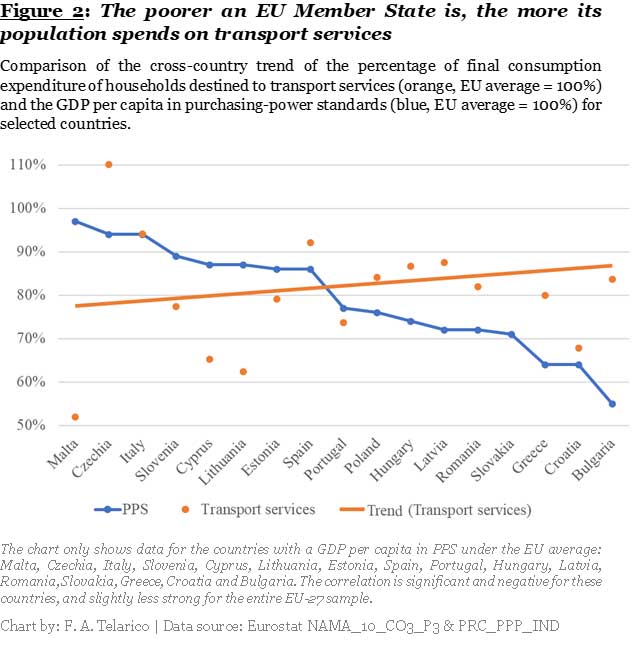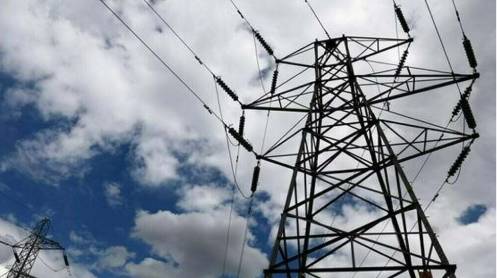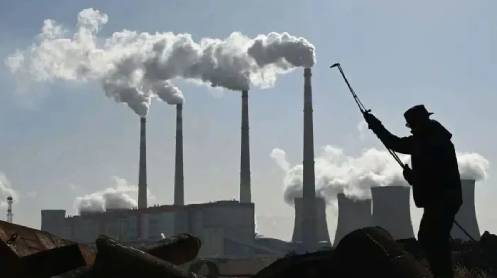In the last few years, the European Union has been going above and beyond in dealing with climate change. Clearly, this is far from being a case of disinterested endeavour to safeguard the planet and the environment. On the contrary, the EU’s efforts aim at reinforcing its “normative power”. In effect, the EU has gained some clout on the international stage, even vis-à-vis faraway countries like Vietnam and China. Yet, in doing so the Union embroiled in the apparent rush for more and more ambitious climate standards and targets. Therefore, Brussels needs to start acting and deliver on its promises to keep staying ahead of the pack. Even more so given US President Biden’s strengthened engagement with friends and foes alike on the climate and human rights.
Last week, the European Commission manifested its acknowledgment of this need by unveiling the Fit for 55 (FF55) growth strategy. Overall, this new, beefed-up Green Deal should reduce greenhouse gas emissions to 55% of their 1990 level by 2030. In some analysts’ view, the FF55 plan is a game changer in the long-term race towards climate neutrality alas. In fact, it could “both deepen and broaden the decarbonisation of Europe’s economy to achieve climate neutrality by 2050.” Moreover, they expect the FF55’s 13 measures to generate a number of positive ripple effects across EU economies.
True, wanting to reduce greenhouse gases significantly by 2030 and reaching net-zero-emission by 2050 goal is commendable under many regards. Still, the FF55 includes a number of measures that could impact ordinary people’s life massively across Europe. Nevertheless, the 27 Member States of the EU are responsible for as little as 8% of global emissions. As such, it is necessary to take a deeper look at how the FF55 will affect different countries and demographics.
The transition’s social cost
The realisation that reduction of capitalism’s dependence on fossil fuels will have serious socio-economic consequences is not at all new. Contrariwise, scholars and politicians have been outspoken about an indisputable “conflict between jobs and the environment”, since the early 1990s. Together, the pandemic-induced recession and the signing of the Paris Accord have brought the notion back on the centre stage.
Factually, pushing the energy transition entails facing mass lay-offs, generalised workforce retraining and taxes hikes on ordinary consumers. For instance, these hardships’ seriousness is evident in the progressive abandonment of coal mining for energy generation in the US. Moreover, the energy transition requires strong popular backing in order to be effective. Yet, measures pursued to achieve environmentally friendly growth tend to generate strong, grassroot opposition. Most recently, France’s gilets jaunesprotests shows that environmental policies generate social discontent by disfavouring middle and lower classes disproportionately.
The poorest families and countries will bear the costs
One of the FF55’s main policy innovation regards the creation of a carbon trading market for previously exempt sectors. Namely, companies working int the transport and buildings sectors, be they public or private, will have to follow new rules. As it happened in the energy industry before, each company will have to respect a “carbon allowance”. Basically, it is an ‘authorisation to pollute’ which companies can buy from each other — but the total cannot increase. Despite all claims of just transition, this and other measures will have a gigantic, re-distributional effect within and between countries. And it will be of markedly regressive character, meaning that poorer families and countries will pay more.
Taxing transport emission is regressive
Historically, these sectors were trailing behind most others when it comes to decarbonisation for a variety of reasons. First of all, the previous emission trading system did not include them. Moreover, these are far from being well-functioning markets. As a result, even if the cost of emissions was to rise, enterprises and consumer will not react as expected.
Thus, even as they face higher costs, companies will keep utilising older, traditional vehicle and construction technologies. With taunting reverberations on those poorer consumers, who cannot afford to buy an electric car or stop using public transport. Hence, they “will face a higher carbon price while locked into fossil-fuel-based systems with limited alternatives.” Moreover, the EU could worsen these effects by trying to reduce the emission fees on truck-transported goods. Indeed, the commission is proposing a weight-based emission standard that would collaterally favour SUVs over smaller combustion-engine car and motorbikes.
In a nutshell, higher taxes and fee will strike lower-class consumers, who spend more of their incomes for transportation. Even assuming these households would like to switch to low-emission cars and buildings, current market prices will make it impossible. In fact, all these technologies ten to have low usage costs, but very high costs of acquisition. For instance, the cheapest Tesla sells at over €95,000, whereas a Dacia Sandero “starts at just under €7,000.”
Eastern Europe may not be willing to pay
At this point, it is clear that the FF55 plan will deal a blow to ongoing efforts to reduce inequalities. In addition, one should not forget that EU Member States are as different amongst them as they are within themselves. Yet, the EU is not simply going to tax carbon in sectors that inevitably expose poorer consumers the most. But in doing so it would impose a single price on 27 very diverse societies and economies. Thus, the paradox of having the poorest countries in the EU (i.e., Central- and South-Eastern Europe) pay the FF55’s bill.
To substantiate this claim, one needs to look no further than at a few publicly available data. First, as Figure 2 shows, there is an inverse relation between a country’s wealth and consumers’ expenditures on transport services. Thus, not only do poorer people across the EU spend more on transport, poorer countries do as well. Hence, under the FF55, Bulgarians, Croatians, Romanians and Poles will pay most of the fees and taxes on carbon emission.

Additionally, one should consider that there is also a strict inverse relation between carbon emissions and the minimum national wage. In fact, looking at Figure 3 one sees that countries with lower minimum wages tend to emit more carbon dioxide. On average, countries with a minimum salary of €1 lower emit almost 4.5mln tonnes of carbon dioxide more. But differences in statutory national wages explain almost 32% of the cross-country variation in emissions. So, 1.5 of those extra tonnes are somehow related to lower minimum salaries and, therefore, lower living standards.

The EU’s quest for a just transition: Redistribution or trickle down?
Hence, the pursual of a ‘just’ transitionhas come to mean ensuring quality jobs emerge from these economic changes. However, many of the FF55’s 13 initiatives may worsen disparities both within countries and, more importantly, between them. Thus, the EU has been trying to pre-empt the social losses that would inevitably come about.
From the Just Transition Fund to the Climate Social Fund
In this regard, the European Union went a step forward most countries by creating the Just Transition Fund in May. That is, the EU decided to finance a mix of grants and public-sector loans which aims to provide support to territories facing serious socio-economic challenges arising from the transition towards climate neutrality [… and] facilitate the implementation of the European Green Deal, which aims to make the EU climate-neutral by 2050.
Along these lines, the FF55 introduces a Climate Social Fund (CSF) that will provide “funding […] to support vulnerable European citizens.” The fund will provide over €70bln to support energy investments, and provide direct income support for vulnerable households. The revenues from the selling of carbon allowances to the transport and building sectors should fund most of the CSF. If necessary, the Member States will provide the missing portion.
The EU Commission may give the impression of having design the CSF to favour poorer households and countries. However, it may actually be a false impression. In fact, it is clear that the entire carbon pricing initiative will impact poorer household and countries more strongly. However, only a fourth of the carbon pricing system’s revenues will go to fund the CSF. The remaining portion will finance other FF55 programmes, most of which have a negative impact on poorer communities. Thus, despite the CSF, the final effect of the entire FF55 will be a net redistribution upwards.
Stopping a redistribution to the top
Nevertheless, there is a way to fix the FF55 so that it can work for poorer households and lower-income countries. Given that the CSF is too small for the challenge it should overcome, its total amount should be increased. In fact, the purpose of higher carbon pricing is in any event not to raise revenue but to direct market behaviour towards low-carbon technologies—there is thus a strong argument for redistributing fully the additional revenues.
Hence, the largest, politically sustainable share of carbon-pricing revenues from transportation and housing should ideally go to the CSF. In addition, the Commission should remove all the proposed provision that divert CSF money away from social compensation scheme. In fact, poorer families will not gain enough from subsidies to electric car, charging stations and the decarbonisation of housing. One contrary, “using the fund to support electric vehicles would disproportionally favour rich households.”
Finally, the allocation of CSF money to various member states should follow rather different criteria from the current ones. In fact, the Commission already intends to consider a number of important such as: total population and its non-urban share; per capita, gross, national income; share of vulnerable households; and emissions due to fuel combustion per household. But these efforts to look out for the weakest strata in each country could backfire. In fact, according to some calculations, a Member State with lower average wealth and lower “within-country inequality could end up benefiting less than a rich member state with high inequality.”
Conclusion
A number of well-known, respected economist have been arguing that environmental policies should account for social fallouts attentively. Goals such as emission reduction and net-zero economies require strong popular support in order for the transformation to succeed. Or at least, the acquiescence of a majority of the public. Otherwise, the plans of well-intentioned and opportunistic governments alike will derail. After all, this is the main lesson of the currently widespread protest against the mandating of ‘Covid passes’ and vaccines.
If the FF55 will deal poorer households a devastating blow, social unrest may worsen — fast. But as long as it will also hurt Eastern European countries as a whole, there is a chance. Hopefully, European parliamentarians from riotous Hungary or Poland will oppose the FF55 in its current shape. Perhaps, in a few years everyone will be thankful for these two countries strenuous resistance to EU bureaucracy. Or else, richer countries may force Central- and South-Eastern Europe to swallow a bitter medicine. Even though, whatever happens, Europe alone cannot and will not save the planet.




